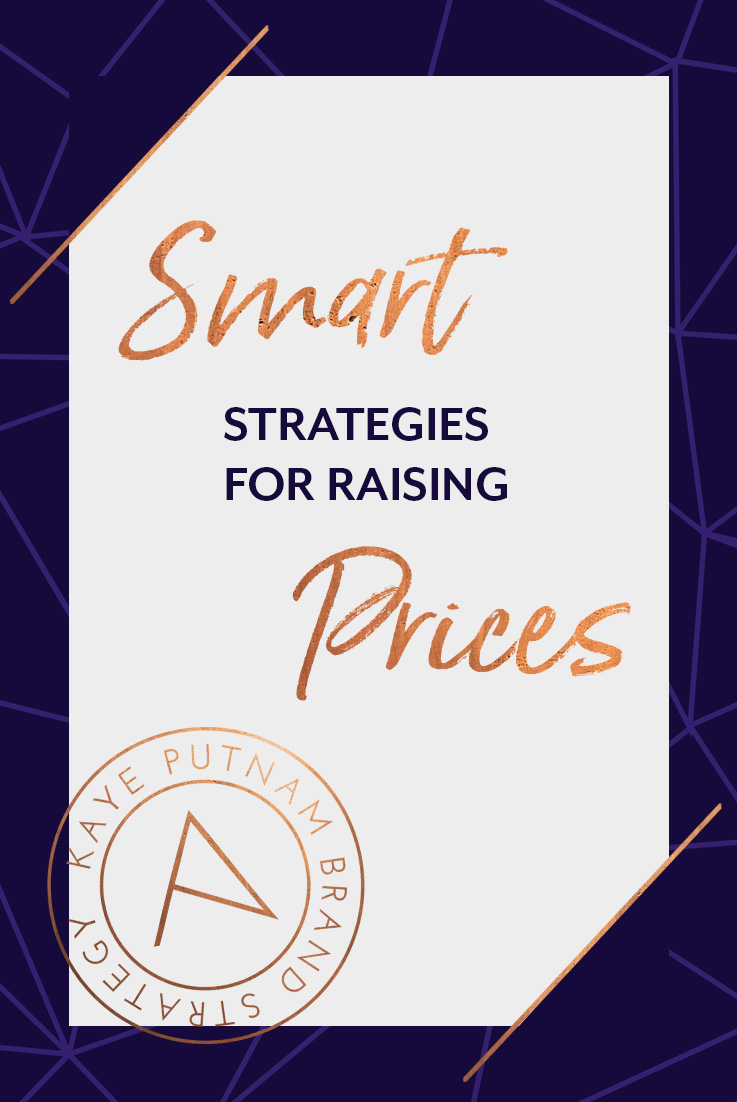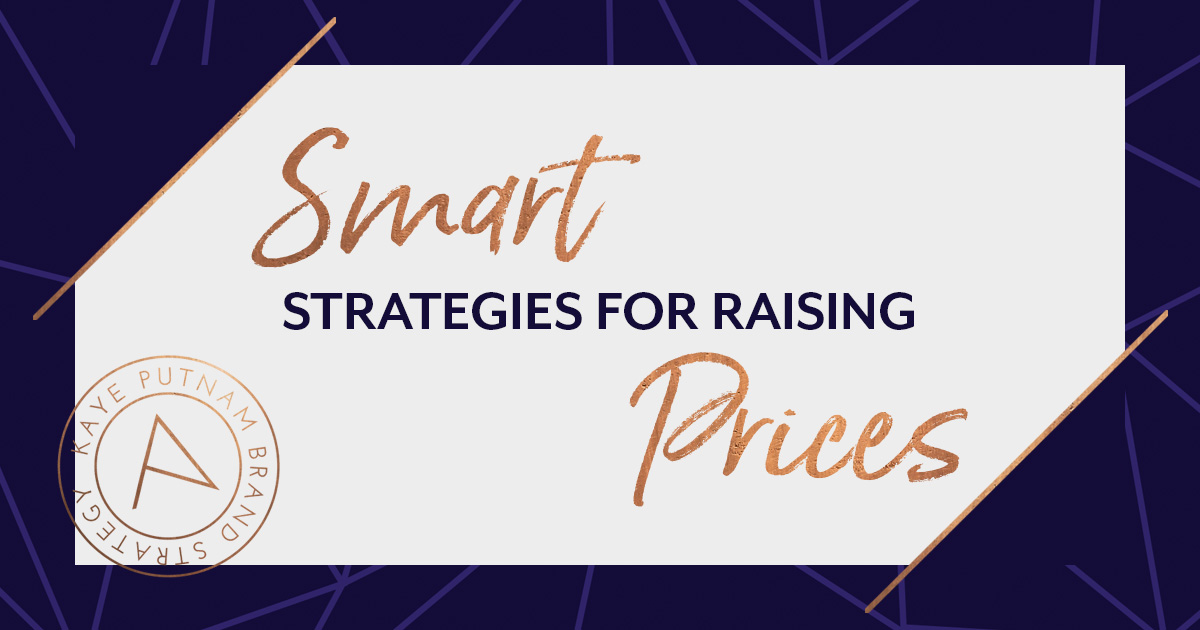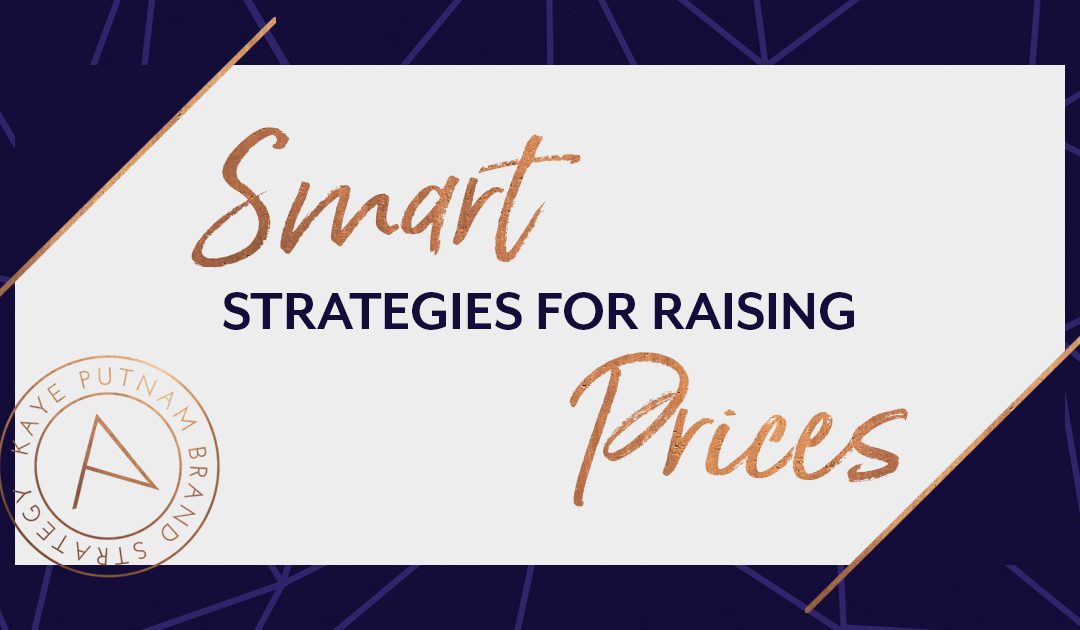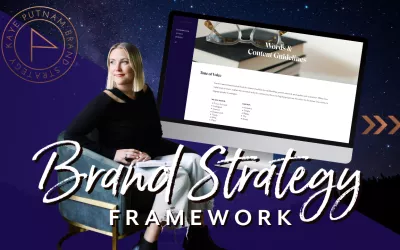Have you had the entrepreneur pricing epiphany yet?
Often it goes like this… You grab a pen and paper – or open a fresh google sheet – to do some basic math for revenue planning in your business.
(You are *excited*. It feels great to plan!) 🤓
You want to bring home $________ this year. (Yaaaaassss!)
Figuring in taxes, time for non-revenue generating activity, and basic expenses (for software and supplies, for example)… that means you need to generate $________ in revenue this year.
(Okay, so far so good!) 🤩
Your current prices are $_______.
So, the number of packages and clients you need to hit that revenue mark is ______.
(Wait, seriously?!?) 😳😳😳
Yup. That’s when it hits you. You need to sell exactly 642,099 packages (or products) to 536,229 customers to get there.
Okay… those numbers are a bit extreme. But you get my point. And, you have probably been there… doing this cray-cray math that makes you want to cry into your now-ironic “I’m the Boss” coffee mug.
You have found yourself in a common – but tricky – situation with your pricing. But buck up, Brilliant Buttercup! Because here’s the thing… You are not alone…

This pricing dilemma is actually very common among early-stage entrepreneurs… perhaps even a right of passage.
And while it can be detrimental to a young business, it is also totally fixable!
In this article, I’m going to show you how I righted my pricing ship back in the day – and how you can, too.
🎥 As always, if you’re more of a video person, tune in below to watch. For the written article, continue on!
The Pricing Mistake Many Entrepreneurs Make
When I first started in online business, I was quickly overbooked with clients. As a result, I never had time to focus on my own business. Meanwhile, even though I was hustling, landing tons of jobs, and working loooooong days… I wasn’t actually making a lot of money.
Womp womp.
(Spoiler alert: My prices were super-low… but I didn’t realize it yet… )
So, I was nose-to-the-grindstone on client work, day in and day out. I never had time to consistently create content and market, so I didn’t have a predictable flow of leads. I would work non-stop in my business… and then my pipeline would dry right up. So I’d market again, and generate a ton of revenue… and then go right back to the focused grind again to fulfill.
This cycle would repeat over and over again. It was exhausting, and I felt stuck. I yearned to cut back on my client work, so I could focus on optimizing my business model – and the structure and systems that I had set up. But, could I do that? Could I say no to money?
That’s when I did some of that simple revenue planning described above, and made this very scary realization:
Even if I was consistently booked out …
… AND I could figure out a way to get off the “hustle-do see saw” that caused those dry spells in revenue…
… AND I somehow magically had time to do the content marketing and the lead generation to stay booked out…
I still wasn’t going to be making very much money.
Worse yet, the math showed I wasn’t profiting enough to consider hiring help to deliver the work, either.
Clearly, something had to change.
Why Most New Entrepreneurs Start Low – and Need to Raise Prices
Here’s the story I hear time and again from small business owners who’ve been there. When you start out, you’re not super-confident yet in your results or what you can do for clients. So you offer very affordable prices. (Totally rational!)
Maybe you’re transitioning from a 9 to 5, and you just use your old “hourly rate” to determine your pricing.
💭 You think, “If people will pay me to do this thing I love… and I can do it when and where I want… then what more could I need?” 💭
You likely haven’t had your eyes opened yet to all of the extra expenses (taxes, software, support, oh my!) you encounter as the business owner… and you definitely haven’t considered the time that goes into necessary non-revenue-producing activities.
And eventually, you realize that you can – and must – increase your pricing.
Please understand that this is natural. And for most of us it’s an inevitable part of evolution in business. (I don’t think I can name one successful entrepreneur who didn’t dramatically raise prices at some point.) Do not feel bad about raising your prices. This isn’t about being greedy. It’s about building a sustainable business that’s going to align with your goals into the future – not just support your current needs.
Pin this article to reference later! 📌

Pin this article to reference later! 📌
How to determine if your prices need a hike
When I found myself at this crossroads, I asked myself the following questions. I encourage you to ask these of yourself today if you are considering a pricing increase.
1) If I want to bring home $_________ as my “salary,” how much revenue do I have to create, and how many clients at my current prices do I have to book to get there? (Yup, it’s that basic math again…!)
2) If I wanted to hire someone (or a team) to get leverage, could I afford to do it?
3) If I wanted to invest in courses, masterminds, coaching, or another type of support, do I have room built in to my prices to be able to do that?
And perhaps the most important question…
4) At the end of the day, if my profit is $_________, is all the time I’m putting into my business worth it? Is it a good trade-off for me, in terms of the time it takes away from the rest of my life?
(This one is critical for me, as I’m sure it is for you. I’m a mom of two, and I have an amazing husband. My time with them is precious. If my business wasn’t creating any profit for our family, then it wouldn’t make sense. It wouldn’t be sustainable. What similar or comparable trade-offs are you making to be in business? What needs to be in place to make it worth it for you?)
The real, unflinching answers to these questions should help bring the situation into sharp focus for you. If you do find it’s time to increase your prices, read on… (Be brave. It doesn’t have to be painful.)
The Action Steps: How can you raise prices – without tanking your business
Obviously, you’re doing something right, or you wouldn’t be in this spot, right? So, raising your prices doesn’t mean completing up-ending your business model.
You just want to minimize the constant “busy-ness.” You want to re-distribute some of your bandwidth and time – and work a little less in your business, so you can also work on your business.
Make these adjustments to make your price increase possible – and thrive:
- Ensure that you’re not positioning yourself as a commodity in the market.
If you are competing on price, you’re competing as a commodity. Through your messaging and your business practices, you’re teaching your prospects and customers to make buying decisions based primarily on cost. The result? To win business, you must offer low (or the lowest) prices.
If this is you, don’t despair. You can fix it. (And you must! …because this positioning is deadly in the entrepreneurial space.)
First, understand that if raising your prices means you will lose all of your clients (because you taught them to choose you based on price) – that means that you haven’t built a strong enough brand to support the prices you need to charge to be sustainable.
It’s time to replace the “price-based value proposition” with one that will serve you better. The key to this is a strong brand that communicates your unique value… so you’re not positioned as “just another” graphic designer, “just another” copywriter, or just one in a sea of options. Shift your thinking – and your messaging – to reflect that there actually aren’t any other options in the market. There’s only one you.
If you’ve been using price as a primary marketing message (on your website, social media, etc), it’s time to stop doing that – now. (No more offering sales or discounts! This isn’t the bargain basement.) You must focus on other selling points that attract clients who aren’t so price-sensitive.
- Assess your current clients.
The next step is to take a hard look at your current client base. You may find that you don’t have the right clients right now – and that’s okay.
So, we’ve established that if raising your prices means you lose all of your clients, your brand needs an upgrade. The goal of that upgrade process will be twofold: to attract clients that aren’t so price-sensitive; and to ensure you’re creating an experience that those people want.
Different clients buy at different price points. The beginning entrepreneur doesn’t invest in the same courses and support that a six-figure or seven-figure entrepreneur buys. What are you offering? Who are you targeting with your offers?
Customers want the products and services that they invest in to be tailored to their situation. To show them you are just the right solution, you have to first be clear yourself about what client you’re going after. You must intentionally speak to them – in their language, with their needs in mind at all times. And, you must make sure that your target market has the means to pay for your new prices.
- Take the steps to re-organize and transition your clients.
Before I raised my prices, I was working with a lot of smaller, start-up entrepreneurs. Most of them weren’t going to be able to afford my prices after the up-leveling, so I had to find new people. (In general, I needed to target clients who had been in business longer – or at least those with well-paying corporate incomes they could use to fund their business launch.)
But, let’s be real. It’s probably not realistic for you to sweep through the village like some terrifying mythical creature and fire all your current, paying clients. Real life – and real business – just isn’t like that.
Here are a few strategies to consider for making the transition easier.
(Note: These adjustments could be temporary, and have a sunset date – or you could make them part of your regular future offerings.)
“Grandfather in” some of your favorite existing clients – for now. Essentially, this means you continue to honor the prices that they’re currently paying. They may not want – or be able to – pay for a massive price hike. But you can work on attracting new clients at your new prices while you continue to be paid by clients you enjoy working with.
Scale back the services or products that you offer at the lower price point. Review what is included, and the time and resources that you must invest to deliver. Can you remove elements to offer an entry-level service or product? Can you reduce the quantity of what is included?
In this way, you can have offers that are affordable for people in the beginning stages, or who are more price-conscious. But, you also have higher-end options with which to meet the market for the service or product you want to be delivering.
A couple of examples, to illustrate:
As a web designer, if your signature package includes up to 12 pages, can you offer a package with 5 or 7 pages? Now a business with a smaller budget can work with you to get a basic site.
As a visual artist, if your signature pieces are on 36×48 canvas, can you offer select pieces at 18×24? Now a more entry-level collector can bring your piece home.
Change up the delivery method for the services or products that you offer at the lower price point. Similar to number 2, this could mean you still have something accessible for those who want to spend less.
Examples:
As a coach, can you distill the basic elements of your 1:1 program into a group program that runs a set number of times? By teaching your methods to a group, you can increase the revenue you glean from your time investment – and still get clients results.
As an interior designer / feng shui practitioner, could you create an online course that teaches homeowners how to plan, shop for, and arrange their pieces to transform a space? Now, someone who can’t invest in working with you directly can still learn from you – and implement your strategies.

The Linchpin: Mind your mindset.
Everyone’s experience with up-leveling is different, but I have personally found that increasing my prices meant I had to work diligently to up-level my mindset, as well.
Yep, mindset is the secret ingredient that pulls it all together – and makes big things things possible. (And, you know I believe in thinking big!)
To achieve and maintain the confidence to uplevel and charge more, I had to be willing to invest more in my own business at the same time.
Again, this is very personal, but I’ll share my own perspective here. For me, I just wouldn’t feel capable of the *big things* if I wasn’t willing to invest in myself at a higher level… one that is aligned with the investment I’m asking my clients to make. And that, in turn, would make sales really hard…
If you don’t honestly, deeply believe that you are worth your new prices, you’ll be in for an uphill battle.
Bottom line: Getting your mindset right – so you feel 100% confident offering the new prices? That’s… well… that’s priceless. 😉
Need help getting that unshakeable brand clarity? Ready to upgrade your brand to appeal to a new, more advanced level of client?
In my Brand New Brand course, I walk you through my proven process for building a psychology-driven brand that can command premium pricing. You can learn more about the method and enroll in the course here.
You deserve to have a business that is sustainable and supports your lifestyle. If you’ve come this far, I have full confidence in you! Keep being amazing – and be sure what you’re charging is commensurate with your genius.
Now go and raise your prices!





Great article! That is for sure what most people miss while re-pricing their product, what was added that made this product more valuable therefore more expensive?
Thank you for the reminder